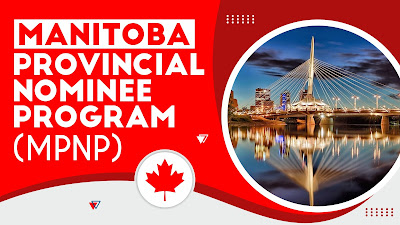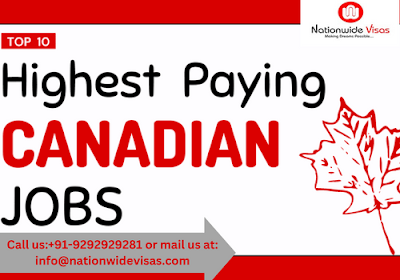In the year 2022, Canada approved an all-time high of 608,420 Work Permits. Most of the approvals were for candidates whose occupation was included in the Canada Occupation In Demand List.
The number of approvals for 2022 is almost 200,000 higher than in the year 2021 wherein Canada approved 414,000 Work Permits. The approvals were through two major Work Permit programs in Canada:
- The IMP- International Mobility Program
- The TFWP Temporary Foreign Worker Program
The majority of the Work Permit approvals in 2022 were through IMP with 77% of the total or 472,070 Work Permits. The rest of the permits i.e. 136,350 Work Permits were approved through TFWP.
In the year 2019, 303, 545 Work Visas were approved through IMP. The numbers declined slightly in 2020 during the pandemic. In 2021, the numbers rebounded to 310, 660. The IMP has thus witnessed a hike of 55% in Work Permits after 2019.
 |
| Canada approved a record 608,420 Work Permits in 2022 |
In the year 2019, 98,030 Work Visas were approved through TFWP. The numbers declined slightly in 2020 during the pandemic. In 2021, the numbers rebounded to 103,340. The TFWP has thus witnessed a hike of 39% in Work Permits after 2019.
The TFWP and the IMP
The IMP and TFWP both offer Work Permits to eligible TFWs - Temporary Foreign Workers residing and working in Canada. Nevertheless, there are major variations between these two programs that must be kept in mind.
Employers in Canada can offer Work Visas to TFWs through the TFWP in order to respond to the authentic scarcity of labor in the nation. The most prominent difference between the IMP and TFWP is the requirement of the LMIA - Labor Market Impact Assessment. It is a document offered by the Government of Canada applied to assessing the impact of recruiting an overseas citizen on the labor market in the country.
LMIAs are required for offering Work Visas through TFWP. The Work Permits issued after an LMIA are normally specific to an employer. It is in contrast with the IMP which offers Open Work Permits to eligible overseas nationals.
The IMP seeks to advance the broad cultural, social, and economic policy objectives of Canada. It offers Work Permits normally according to the reciprocity between Canada and the applicant’s nationality. The approval is also for a major economic or social advantage resulting from recruiting the TFW.
As a result, the IMP has pathways like the GTS - Global Talent Stream, IEC - International Experience Canada, and Significant Benefit Work Visa Programs and others.
As specified already, IMP has extensive scope in comparison with TFWP. The Government of Canada does not specify an LMIA while approving Work Visas through IMP. The applicants are normally offered Open Work Permits.
IMP Categories with a maximum allocation of Work Permits
Below are the streams under IMP that were pathways for maximum approvals of Work Visas in 2022:
- Medical Fellows and Residents and applicants of Post-graduate Employment: 36% of overall Permits
- Religious or Charitable Workers: 29%
- Other participants under IMP: 8%
- Skilled Workers’ Spouses – 5%
- Post-doctoral Ph.D. award recipients and fellows – 4%
- Intra-company transfers – ICTs – 2%
- International Experience Canada -2%
A few of the major policy alterations have to be noted here. IRCC has declared diminished requirements for Overseas Physicians seeking to immigrate to Canada. It has also enhanced the measures for the accreditation of medical professionals trained overseas. The initiative is for responding to the acute scarcity of workers in social assistance and healthcare all across the nation.
TFWP Categories with a maximum allocation of Work Permits
Below are the streams under TFWP that were pathways for maximum approvals of Work Visas in 2022:
- Workers in Agriculture – 51% of overall Permits
- Other TFWs having LMIA – 46%
- Caregivers Live-in —2%;
- Caregivers—0.2%
Canada has notably implemented several changes in policies for retaining and settling Caregivers. This is under the initiatives for addressing the scarcity of workers in social assistance and healthcare. It includes decreasing the work experience criteria by 50% for eligibility for PR Visa applications for these workers.
Provinces with a maximum allocation of Work Permits
The following is the allocation of share of Work Permits in 2022 amongst the 13 Canadian provinces and territories through both TFWP and IMP:
- Ontario—221,280 Work permits
- British Columbia—102,845 Work permits
- Quebec—89,765 Work permits
- Alberta—43,550 Work permits
- Manitoba—19,765 Work permits
- Nova Scotia—12,645 Work permits
- Saskatchewan—10,550 Work permits
- New Brunswick—9,640 Work permits
- Newfoundland and Labrador—4,210 Work permits
- Prince Edward Island—3,840 Work permits
- Northwest Territories—260 Work permits
- Nunavut—60 Work permits







